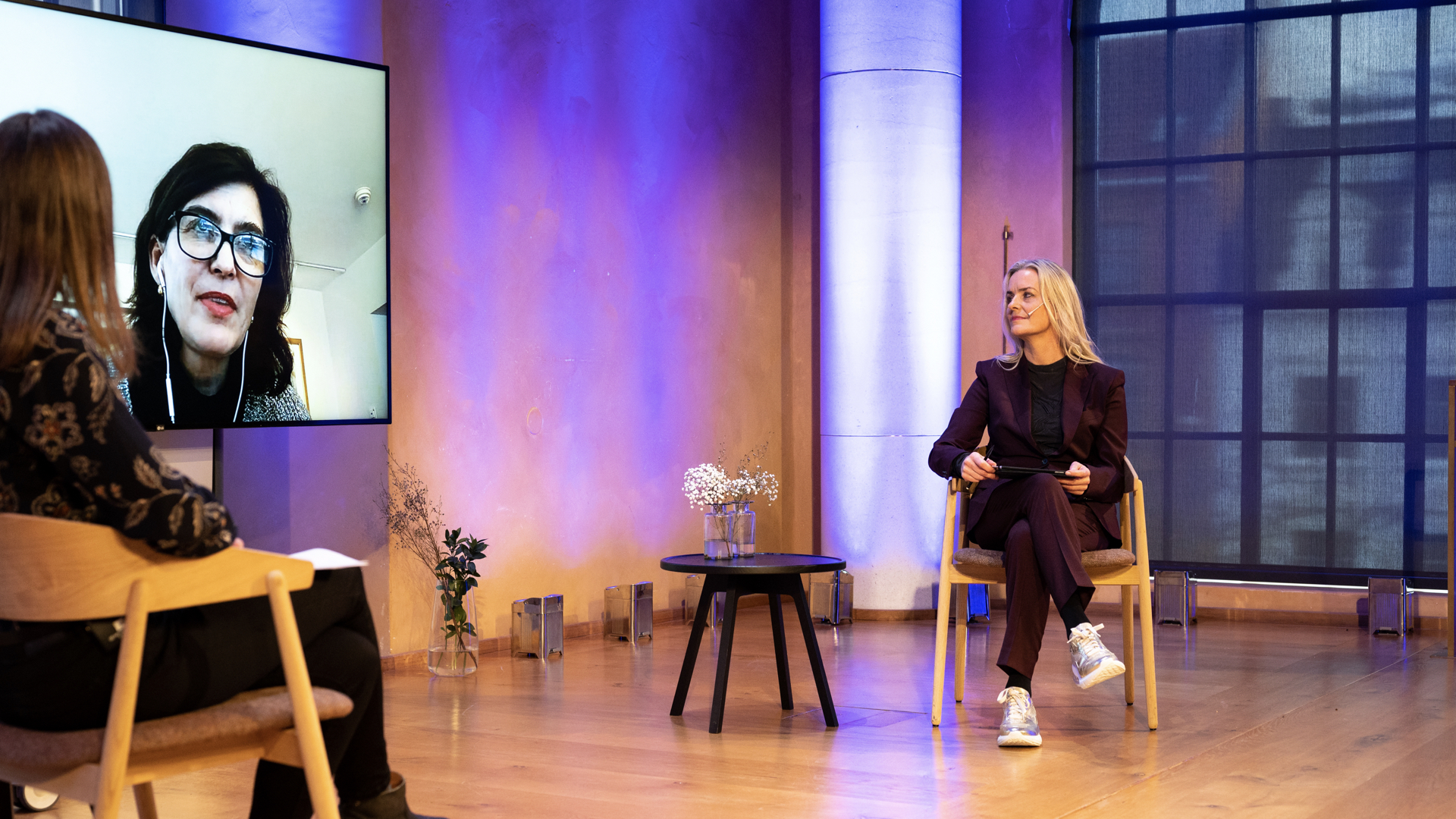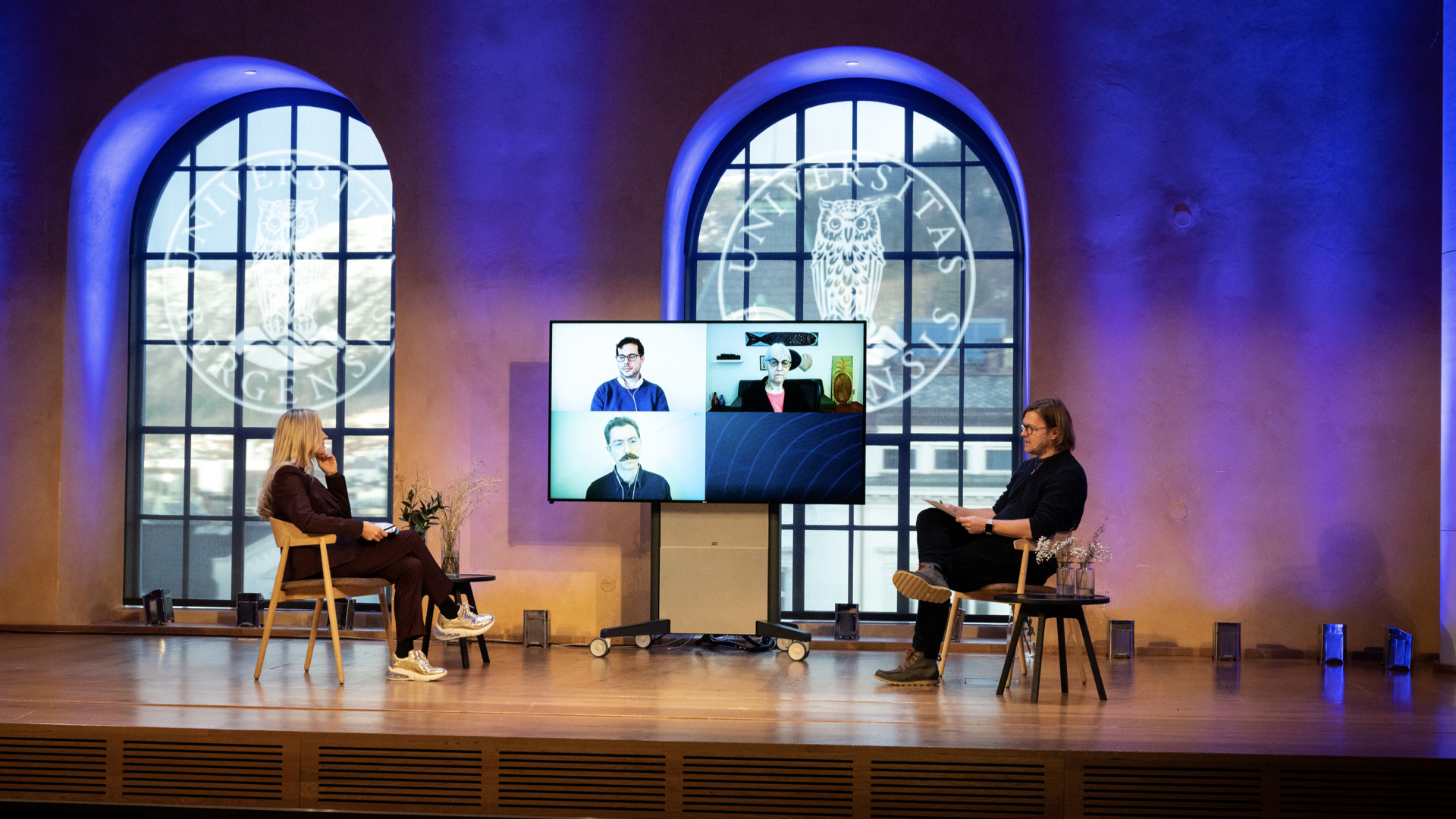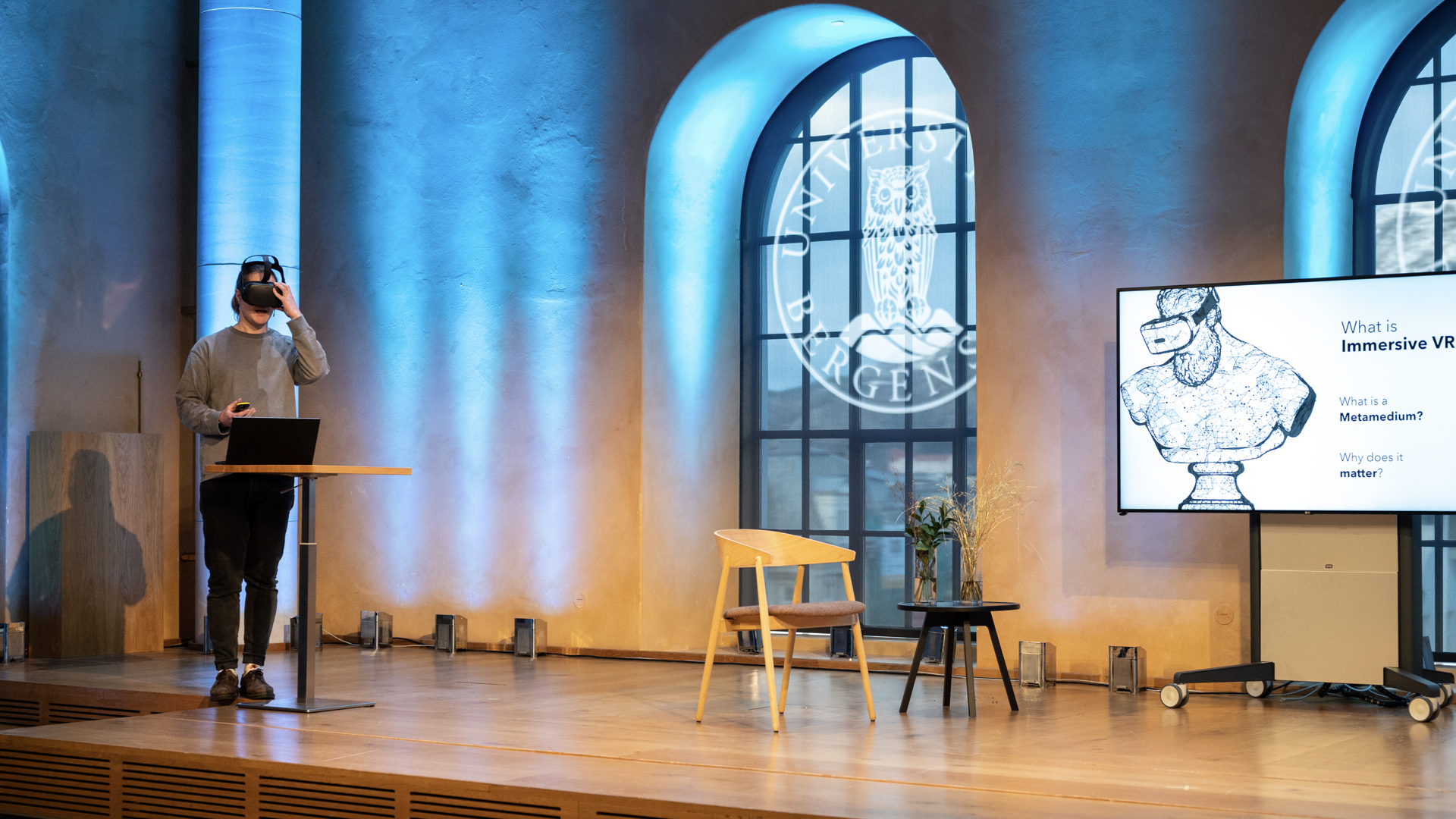On January 19, NCE Media and the ViSmedia Project, University of Bergen, invited you to experience the risks and opportunities of emerging visual technologies in the news media. The conference shed light on ubiquitous news surveillance from above, experimental student learning and virtual reality, and visions for how technical experts can mitigate deepfakes and related challenges.
How could satellite imagery change journalism? What can technical experts do with deepfakes? And how should we best prepare the students to deal with the technologies we don't know yet? These were some of the questions the ViSmedia conference 2021 set out to answer.
Watch the conference in its entirety here:
Visual Futures of the Media was the fifth and final conference by the ViSmedia project at the Department of Information Science and Media Studies, University of Bergen. The speakers at this year's conference have all been involved in and contributed to the ViSMedia project over the last five years, led by the project's principal investigator, Professor Astrid Gynnild, University of Bergen.
Vice-Rector for Education at the University of Bergen, Oddrun Samdal kicked off the conference this year. She spoke about how it's essential to prepare students to deal with and develop the future, as they will play an important role in shaping it. Samdal also stressed the importance of how flexibility, understanding, and critical thinking are skills that become ever more important to prepare for future technologies.
Ubiquitous News Surveillance from Above
The first scenario of the conference dealt with was ubiquitous news surveillance from above and satellite images in storytelling. Satellite images have become more available and of better quality over the years, allowing journalists to investigate stories they otherwise wouldn't have been able to access, as well as being used to investigate breaking stories faster than ever before. The increased exposure to remote imagery, such as satellite images, has also shaped how people view the reality of the earth.
Turo Uskali, Associate Professor at University of Juvaskylä, talked about satellite storytelling in journalism. Satellite journalism is a form of journalism that utilizes data collected by satellites as a source of information. This definition also includes the use of satellite imagery and other geospatial data produced by satellites, such as mapping or location purposes. Today satellite images are mainly used for international reporting, crisis reporting and investigative reporting. “It seems like even the big players have started to use satellite images already, there is a great space for news organizations to step in - and especially national and maybe even regional levels” Uskali says.
Paul C. Adams, professor at University of Texas, has studied the opportunity to monitor climate change from above, and how the remote view of the planet may help to promote a sense of engagement with environmental change. He explains that social scientists have critiqued this sort of a gaze from above that has some claim to power. Despite this, assuming that images of climate change are potentially helpful, the question is; what can we learn from this for journalism?
Surveillance does not only happen using satellite images. In fact, public roads are one of the most monitored areas in our society. Some of the road surveillance can be said to come from above, since it is surveillance initiated by the authorities, but there are several other forms of surveillance as well. The second level is the surveillance performed by commercial companies with camera surveillance on their property. As a side effect these companies also film parts of the traffic. The third level is the peer-to-peer surveillance, which is anyone with a dash camera in their car, or camera on their helmets, bicycles or motorcycles, and of course the mobile phone.
Thomas Wold, Associate Professor at Nord University, has studied this peer-to-peer surveillance. The characteristics of these videos are often related to annoying behaviour of others, unsafe or unusual cargo, accidents and close calls - which typically is where someone takes a chance on a risky overtaking. When it comes to peer-to-person surveillance we know very little about how this affects people’s behaviour in traffic. “It might affect the way we reflect about traffic, our frames of references and our attitudes and our knowledge and understanding of traffic safety” Wold says.
During the interactive panel discussion during this session, Anja Salzmann (University of Bergen) talked about how new technology provides important data and visibility, making abstract topics like environmental changes more understandable. Kjersti Løken Stavrum (Tinius and the Norwegian Freedom of Expression Commission) focused on how digital tools such as drone and satellite imagery empower journalism and provide new angles, new facts, and access to new perspectives. On the other hand, satellite journalism is still difficult for journalists to interpret and for them to know if the images are trustworthy and accurate. Stavrum stressed how we need to understand the algorithms, how we need transparency and a system for the images, which doesn't exsist today.
- We need to make sure we are empowered in a way we want to be empowered, Stavrum says.
 Photo: Hedvig Idås
Photo: Hedvig Idås
Visualizing Alternative Truths
The second scenario of the conference was focused on fake news, more specifically deepfakes. Deepfakes often present a person saying or doing something they haven't said or done. Deepfakes can harm viewers by deceiving or intimidating, and also harm subjects by causing reputational damage. But what should technical experts do about deepfakes?
Nicholas Diakopoulus (Northwestern University) talked about how we don't even need deepfakes to distrust in this day and age. Deepfakes are only a part of the issue with misinformation and disinformation. Deepfake profiles spread false information, contributing to a disinformation ecosystem, with the persons behind the profiles hiding behind fabricated personas. A big problem within deepfakes is persona plagiarism: taking someone else's person and distributing false content through this persona.
Deborah G. Johnson (University of Virginia) stated that it's also getting harder to detect deepfakes since the technology behind them is getting better and better.
- People have relied on the visuals to determine what to trust. If we see something right before us, we think it is true, says Johnson.
She focused on the need to develop technical solutions to detect deep fakes or media literacy; training the public to detect it. We are fairly aware of the harmful effects of Deepfakes; the challenge is to manage it.
 Photo: Hedvig Idås
Photo: Hedvig Idås
Experiential Learning in Immersive Environments
The third scenario in the conference focused on experiential learning in immersive environments. Professor of media design at the department of information science and media studies, Lars Nyre (University of Bergen), has explored innovation pedagogy as a teaching and learning approach with 150 students. He believes that the futures of the media can be created, at least partly, by academic researches and their students. In his ViSmedia research, he has further developed the prototyping approach. Students have developed more than 40 prototypes using technologies such as computer vision, synthetic speech, drone cameras, and virtual reality at his courses in media and interaction design. Nyre states that it is a difficult job, but their duty as academics to dig into this matter.
- I would rather go to Bergen Valley than Silicon Valley. The Norwegian media industry have to equip themselves with independently owned technology to stop Facebook and Google from taking over content production, advertising and innovation, says Nyre.
Techwizard and Ph.D. Candidate Joakim Vindenes (University of Bergen) delved into virtual reality as a meta medium. The function of VR is to be other things, rather than a thing itself. VR technology is powerful as it simulates reality. When the VR headset utilizes its proper function, it is anything but an object; it can become anything that the designer wants it to be. At UIB, students are being taught through exploration and creative problem-solving. Here, they have used VR as an avenue of experience, which has resulted in exciting projects such as Narkomani; a virtual reality experience through a drug-addicts' eyes, in the streets of Bergen.
 Photo: Hedvig Idås
Photo: Hedvig Idås
Bachelor students in TV production at the Department of Information Science and Media Studies (University of Bergen) in Media City Bergen developed the three video scenarios and the SoMe content for the fifth and last ViSmedia conference. Watch the videos and read about the story behind them here.
The ViSmedia conference is co-organized by ViSmedia (the University of Bergen), NCE Media, and Media City Bergen. It is part of the interdisciplinary ViSmedia project funded by the Norwegian Research Council. ViSmedia seeks to investigate the adoption of new visual technology in news media and how this can be done in ways that serve democracy and society.
